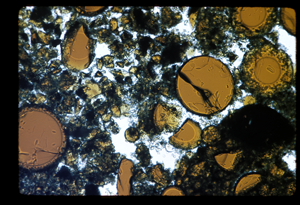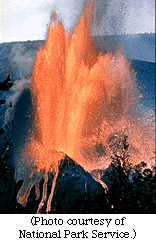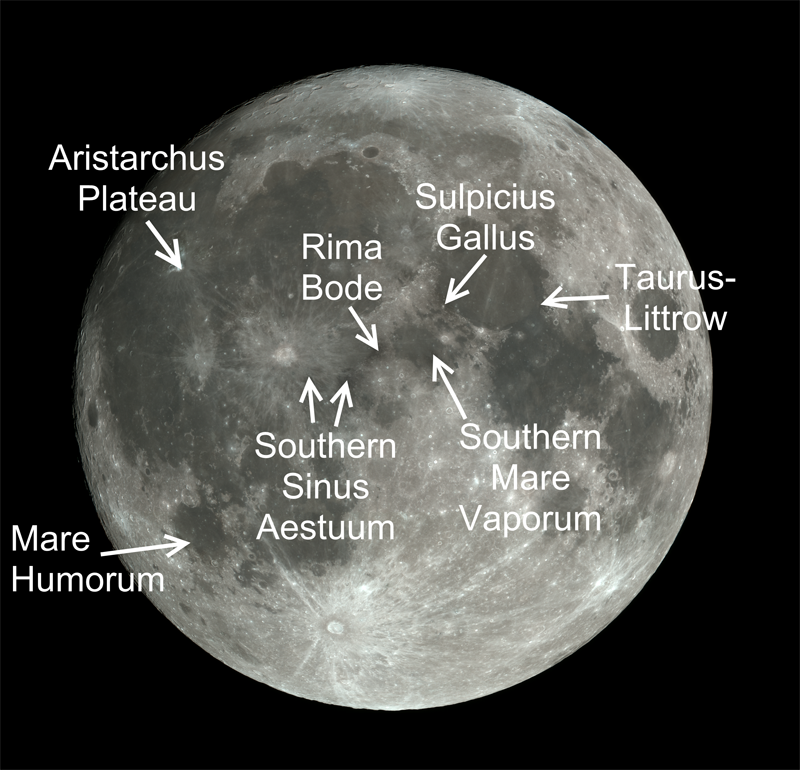
| Project Home | About the Scans | Browse Gallery | Image Map | Support Data | Resources | Ephemeris |
Featured Image - 03/18/2008
Regional Lunar Pyroclastic Deposits: Living off of the land on the next frontier
Although the Moon is thought by many to be a barren wasteland, nothing could be farther from the truth. One of the major unheralded successes of the Apollo years was the discovery that there are resources on the lunar surface that will enable its eventual settlement by humans.
One of the most easily accessible and abundant resources are regional lunar pyroclastic deposits, like the one located northwest of the Apollo 17 landing site. These lunar volcanic products are scattered about the lunar surface and can be effectively characterized using remote sensing techniques. New lunar datasets, such as the data expected to be returned by the Lunar Reconnaissance Orbiter Camera and the global hyperspectral data from the M3 instrument on the Chandrayaan spacecraft will be collected over the next several years, and these new datasets will allow lunar scientists to learn more about these economically and scientifically important materials.
Apollo 15 metric camera mapping photograph showing the Taurus-Littrow region and the large regional pyroclastic deposit located to the northwest of the Apollo 17 landing site. This is the only regional dark mantle deposit that was directly sampled, and it is currently unknown whether its composition is representative of other RDMDs (Apollo Image AS15-M-0972 [NASA/JSC/Arizona State University])
What are lunar regional pyroclastic deposits?
Also referred to as dark mantle deposits, these materials are low-albedo deposits that appear to subdue and mantle the underlying terrain much as snowfall tends to soften the landscape. Investigators agree that these materials are of pyroclastic origin and were produced by processes resembling a terrestrial fire-fountaining volcanic eruptions. The largest and possibly most useful of these deposits are called Regional Dark Mantling Deposits, or RDMDs. RDMDs are composed of small volcanic beads. Many of these beads are "glassy." When magma cools rapidly (quenched), atoms do not have the time to form orderly structures (minerals) so a glass results. These glasses are actually the most primitive materials in the lunar sample collection and their compositions have given lunar scientists their best insights into the composition of the lunar interior. Therefore, the chemical analyses that would be performed concurrently with the large-scale resource processing of pyroclastic materials will also be uniquely useful for improving our understanding of both the composition and evolution of the lunar interior and the processes that formed lunar rocks.
A fire-fountaining eruption from Hawaii's Kilauea volcano [Courtesy National Park Service])
RDMDs cover very large areas (up to 50,000 km2), are tens of meters thick, and can overlie both highlands and mare substrate. These fascinating deposits can be found in seven places on the lunar nearside: 1) Taurus-Littrow 2) Rima Bode 3) Southern Mare Vaporum 4)Southern Sinus Aestuum 5) Mare Humorum 6)Sulpicius Gallus and 7)the Aristarchus Plateau.
The distribution of regional dark mantling deposits on the near side of the Moon [Arizona State University])
Apollo 17 Astronauts Gene Cernan and Harrison Schmitt sampled RDMD materials at Taurus-Littrow, but despite forty years of study we simply do not know how representative these samples are of other RDMDs. That's one of the questions that the next generation of robotic lunar scouts are going to answer!

Sample of pyroclastic glasses collected by the Apollo 17 astronauts near Shorty Crater at Taurus-Littrow Base. Both the orange glasses and the partially crystallized black spheres, which are chemically indistinguishable from one another, are visible in the field of view. [Digital Petrographic Slide Image of Apollo Lunar Sample 74220, NASA/JSC/Arizona State University]
How can lunar regional dark mantling deposits be used as a resource? They simply consist of small little spheres of glassy and crystalline material!
That may be so, but lunar pyroclastic deposits have many important properties that make them uniquely useful as resources for future lunar explorers. Pyroclastic deposits are fine-grained, well-sorted, and boulder-free (or nearly so) making them easy to mine. Future astronauts won't have to bring expensive and heavy tools for mining solid rock--they can simply scoop up the pyroclastic beads and drop them onto a processing conveyor. Such simple procedures will reduce the development time and therefore (and more importantly) costs.
Their uniform grain size (approximately 40 microns, based on studies of Apollo samples) means that pyroclastic materials can be easily moved and used as cover in order to rapidly provide the necessary radiation and thermal protection for lunar habitats, without needing a lot of processing or heavy equipment.
No less important is the fact that once on the Moon, future lunar explorers also need to breathe. Ilmenite-rich lunar pyroclastic deposits (like the ones sampled at Taurus-Littrow) can be used to produce oxygen, which in turn could be used as life support or rocket fuel. Many different ways to produce oxygen from lunar soils (and especially ilmenite) have been proposed since the end of the Apollo program over forty years ago. Probably the most well-studied of these techniques is called the hot hydrogen reduction process.
Using this procedure, first lunar ilmenite (FeTiO3) is exposed to hot hydrogen. By hot, we mean really hot: the hydrogen gas would have to be around 1000 degrees C or so! This reaction produces iron, titanium, and water, which are all economically useful materials. The water is then electrolyzed into H2 and O2, and the hydrogen can be recycled to be used again.
A sustained human presence on the Moon will eventually require other resources besides radiation shields and oxygen, though, and the more materials we can derive locally on the lunar surface, the better. Fortunately, there are more resources that can be extracted from RDMD materials, including H, He, He-3, N, C, and other noble gases, which provide important life support materials as well as agricultural nutrients for a lunar outpost. These important elements have actually been implanted in lunar pyroclastic materials by the solar wind, and can be easily extracted by simply heating pyroclastic materials.
Similarly, studies of lunar volcanic glasses returned by the Apollo missions also revealed that there are thin layers of economically important elements like Zn, Pb, Cu, K, Na, Cl, and Ga coating the grain surfaces of pyroclastic glasses. Again, these elements could be extracted through simple heating and are therefore one of the most accessible currently-known lunar ores. The data from the next generation of lunar robotic scout missions might let lunar scientists identify any large concentrations of pyroclastic glasses coated with these elements from orbit, which will be extremely useful to guide future lunar exploration and development.
Much like the Polynesian seafarers who colonized the Pacific basin, the next generation of lunar spacefarers will live off the land using lunar pyroclastic deposits and other resources, making the first lunar outposts more self-sufficient and cost-effective. The data returned by forthcoming robotic scout missions like the Lunar Reconnaissance Orbiter will pave the way to a better understanding of the Moon's resources while letting today's engineers build on the knowledge gleaned from the Apollo program.
Tweet
|
|
Space Exploration Resources |
|
 LPI LPI
|


